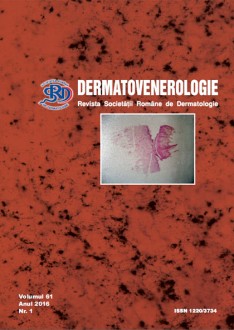Wound healing represents a sequential process, with cellular and biochemical participation, seeking to partially or totally recover damaged tissues. Tissue stem cells achieve homeostasis in normal conditions and are the most important cellular element in restoring damaged tissues.
In skin, epidermal stem cells (interfollicular or niche cells), mesenchymal (bone marrow - derived, actual mesenchymal, adipose - derived stem cells) and melanocytic stem cells (from the niche region) contribute in rebuilding the tissue.
Various growth factors and cytokines as well as a number of micro-environmental factors modulate the activity of stem cells in the skin, such as unipotent stem cells, niche multipotent stem cells and bone marrow - derived stem cells. Also, there are many processes that are associated with stem cells (migration, epithelial mesenchymal transition) which support wound healing.
Knowing the action of stem cells in wound healing, opens important therapeutic perspectives in regenerative mediation. On the other hand, the similarities between wound healing - carcinogenesis and stem cells cycle in these processes create the opportunity to accumulate new data contributing to the understanding of both processes.


